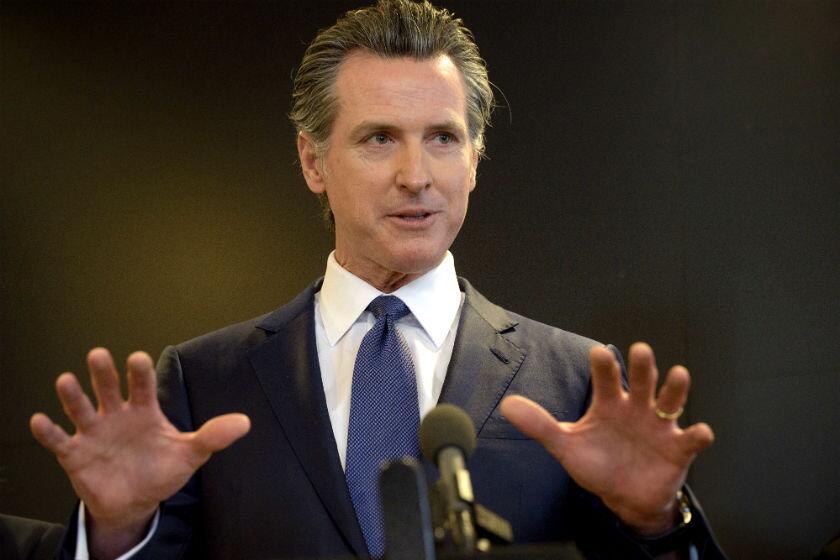The U.S. healthcare system: worst in the developed world
- Share via
The U.S. healthcare system notched another dubious honor in a new comparison of its quality to the systems of 10 other developed countries: its rank was dead last.
The new study by the Commonwealth Fund ranks the U.S. against seven wealthy European countries and Canada, Australia and New Zealand. It’s a follow-up of previous surveys published in 2010, 2007, 2006 and 2004, in all of which the U.S. also ranked last.
Although the U.S. ranked in the middle of the pack on measures of effectiveness, safety and coordination of care, it ranked dead last on access and cost, by a sufficient margin to rank dead last overall. The breakdowns are in the chart above.
Conservative pundits hastened to explain away these results after the report was published. See Aaron Carroll for a gloss on the “zombie arguments” put forth against the clear evidence that the U.S. system falls short.
In the conservative Washington Examiner, for instance, Philip Klein complains that the study is “rigged to produce a result that favors socialized health care systems.” He observes, accurately, that the low ranking for the U.S. results heavily from its lack of universal healthcare and thus scores low on “equity.” He doesn’t seem to think that’s a bad thing. “It’s an ideological decision to view equity as one of the most important factors in judging a health care system,” he writes.
So there you have it: The principle that healthcare should be available to all is just “ideology.” It doesn’t matter if a huge percentage of your citizens can’t get healthcare, as long as the people with access do all right.
Klein also objects that Britain ranks first, despite its falling behind the U.S. in several medical outcomes measures. This is a point made frequently by apologists for the American system, but it’s highly misleading. Typically, they rely on survival rates -- the time after diagnosis that the patient remains alive.
Knowledgeable experts view survival rates as a poor substitute for the really important metric, mortality rates. That’s because survival rates are very sensitive to the lead time of a diagnosis -- the earlier it’s made in the progress of a disease, the better the survival rate. But that often has no affect on mortality.
The phenomenon can be viewed through statistics on breast cancer. American women have a 97% chance of surviving five years after a breast cancer diagnosis is made; British women only 85%.
That’s because American standards call for annual or biannual mammography tests beginning at age 40, while British doctors perform them every three years beginning at age 50. So American doctors will spot cancer at an earlier stage. But that has almost no measurable effect on a woman’s likelihood of dying from breast cancer. That figure is about 24.5 per 100,000 population in Britain, 22.6 in the U.S.
Numerous factors account for the difference, including the diagnostic pattern. But the American system is vastly more expensive and much more likely to throw up false positives. Plainly it contributes to another glaring difference between the British and American systems: Britain spends $3,405 per capita on healthcare, the U.S. $8,500. (The figures are from 2011.)
For that money, as the accompanying charts show, the U.S. gets almost no commensurate advantage in overall health. In fact, the inferiority of the American healthcare system is pervasive, as the National Research Council and the Institute of Medicine documented last year in a comparison of the U.S. with 16 other high-income developed countries.
Americans have a shorter life expectancy than people in almost all those comparable countries. The difference has been growing and observable “for multiple diseases, biological and behavioral risk factors, and injuries.” Among other factors not to be proud of, the U.S. has the highest infant mortality rate in the group.
The good news in the Commonwealth Fund report is that some of the factors driving the U.S. rank into the cellar are beginning to change, due in part to the Affordable Care Act and provisions of the post-2008 stimulus plan, which encouraged the adoption of health information technology by doctors and hospitals.
The Affordable Care Act, of course, has materially narrowed the gap between America’s healthcare haves and have-nots. “With the enactment of health reform,” the Commonwealth Fund says, “the United States should be able to make significant strides in improving the delivery, coordination, and equity of the health care system in coming years.”
That presupposes that the trends launched by the act continue. Some conservatives no doubt will be making a last stand, insisting to the end that America has “the best healthcare in the world,” despite solid evidence that its outcomes are mediocre to poor -- even for those lucky enough to have access to it.
Keep up to date with The Economy Hub by following @hiltzikm.
More to Read
Inside the business of entertainment
The Wide Shot brings you news, analysis and insights on everything from streaming wars to production — and what it all means for the future.
You may occasionally receive promotional content from the Los Angeles Times.










